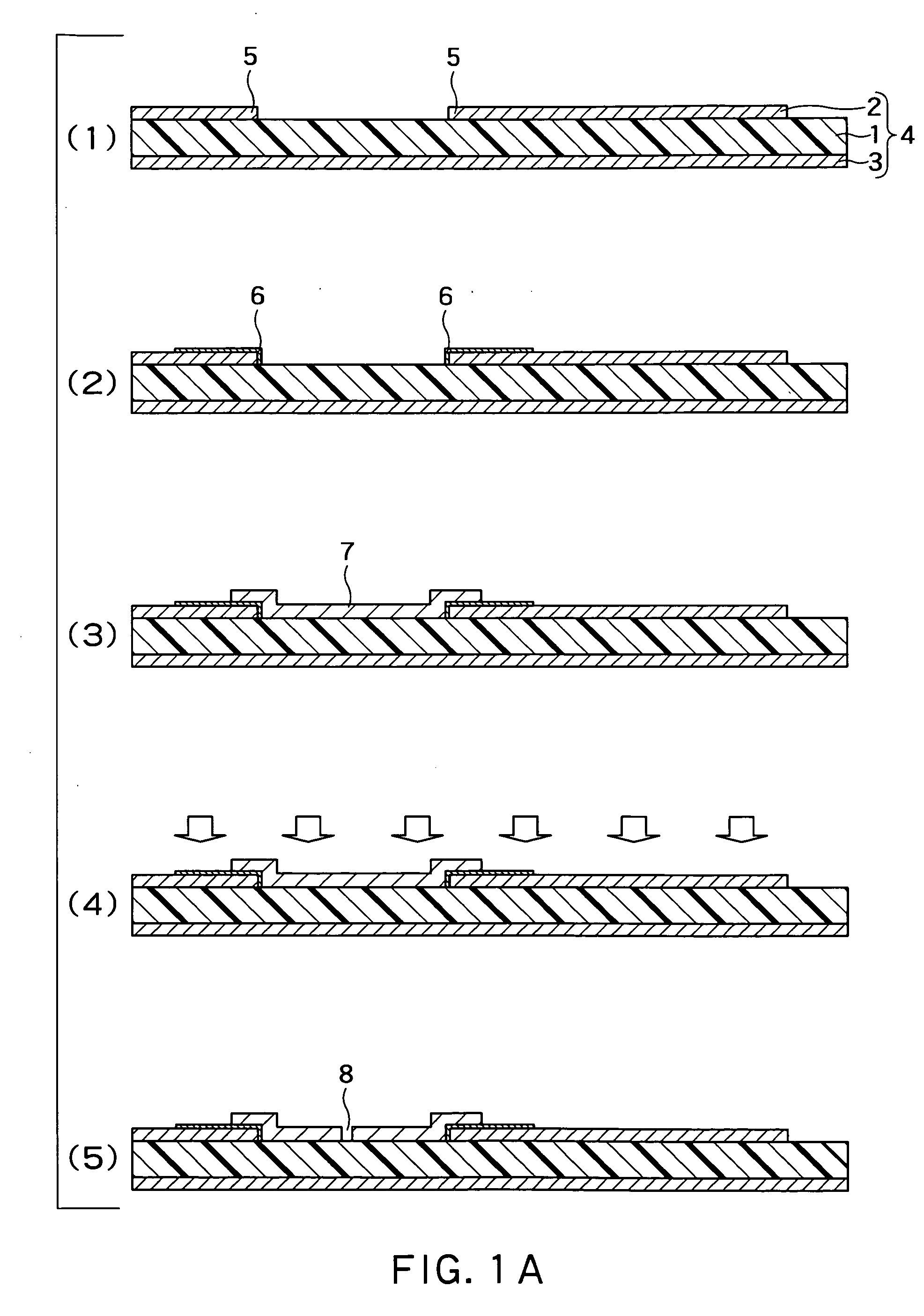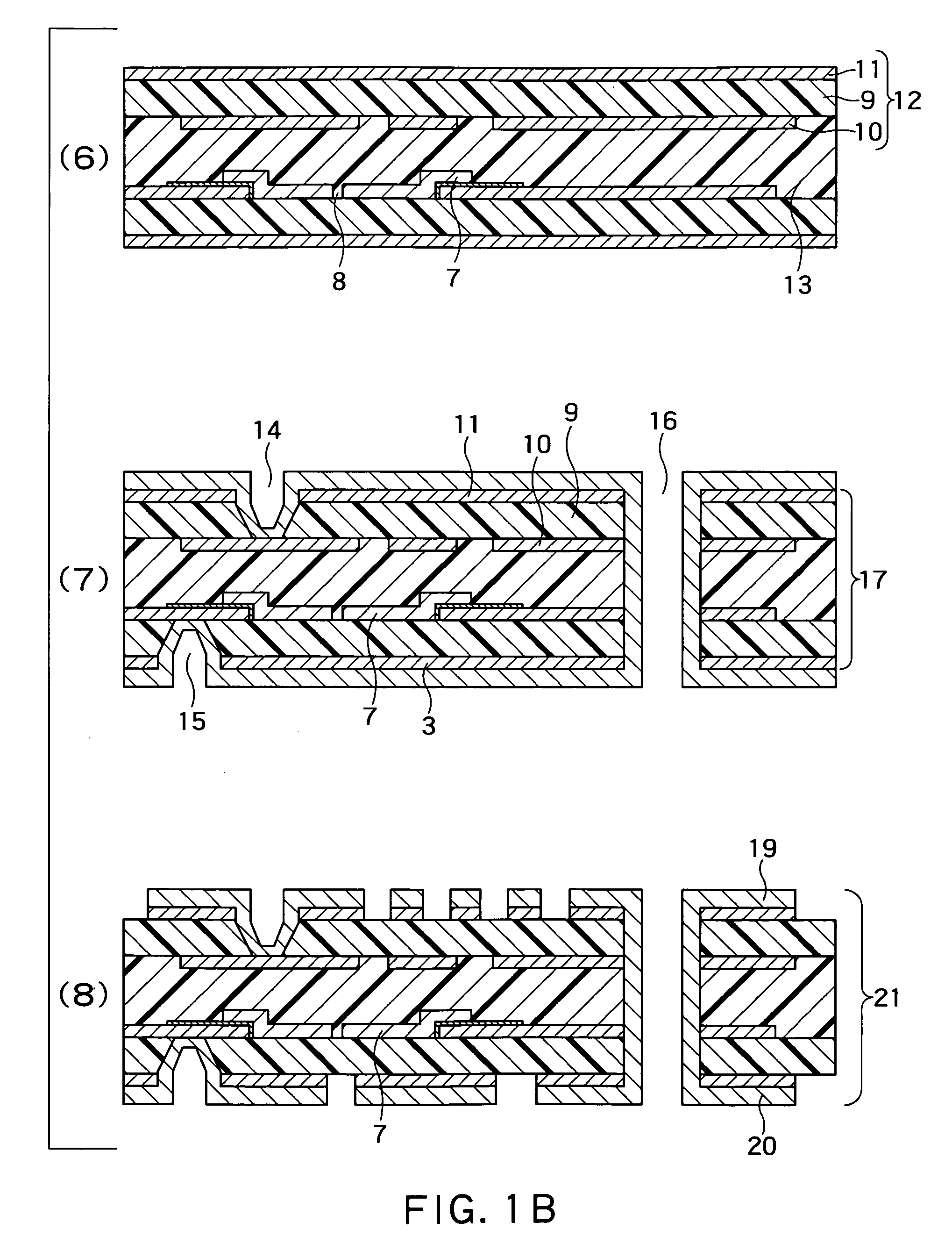Method for manufacturing a printed-wiring board having a resistive element
a technology of resistive elements and printed wires, which is applied in the field of manufacturing a printed wire board with a resistive element, can solve the problems of poor resistance value accuracy of resistor patterns formed by screen printing and uniform film thickness, and the range of obtained resistance values is narrow, and achieves low cost, high resistance value accuracy, and high yield
- Summary
- Abstract
- Description
- Claims
- Application Information
AI Technical Summary
Benefits of technology
Problems solved by technology
Method used
Image
Examples
first embodiment
(First Embodiment)
[0036]FIGS. 1A and 1B are a sectional process view illustrating a method for manufacturing a printed-wiring board with built-in resistive element according to one embodiment of the present invention.
[0037]First, as illustrated in FIG. 1A(1), there is prepared a double-sided copper-clad laminate 4 as an organic resin printed-wiring board having a first metal foil 2 such as copper foil and a second metal foil 3 on both faces of an insulating base material 1 such as polyimide as an organic resin insulating layer. At a required position of the first metal foil 2, an electrode 5 for resistor formation is provided, using an etching process by usual photo fabrication and concurrently a circuit is formed.
[0038]For the insulating base material 1, 25μm thick polyimide was used and, for metal foils 2, 3, 12μm thick electrolytic copper foil was used. The resistance value is determined according to width and film thickness of resistive paste, electrode-to-electrode distance and...
PUM
| Property | Measurement | Unit |
|---|---|---|
| temperature | aaaaa | aaaaa |
| thick | aaaaa | aaaaa |
| thick | aaaaa | aaaaa |
Abstract
Description
Claims
Application Information
 Login to View More
Login to View More - R&D
- Intellectual Property
- Life Sciences
- Materials
- Tech Scout
- Unparalleled Data Quality
- Higher Quality Content
- 60% Fewer Hallucinations
Browse by: Latest US Patents, China's latest patents, Technical Efficacy Thesaurus, Application Domain, Technology Topic, Popular Technical Reports.
© 2025 PatSnap. All rights reserved.Legal|Privacy policy|Modern Slavery Act Transparency Statement|Sitemap|About US| Contact US: help@patsnap.com



